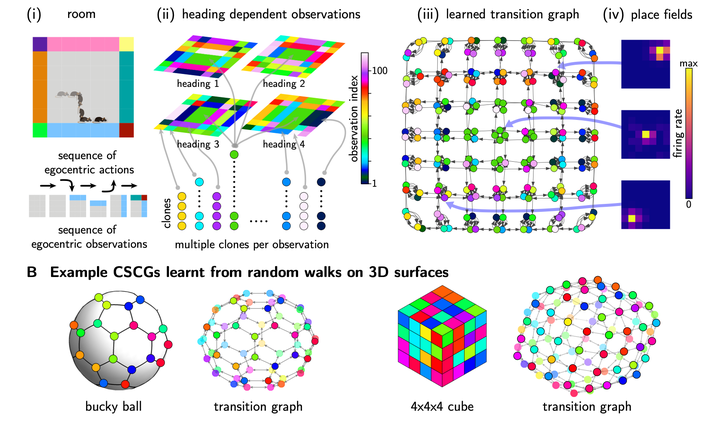Space is a latent sequence: Structured sequence learning as a unified theory of representation in the hippocampus

Abstract
Fascinating and puzzling phenomena, such as landmark vector cells, splitter cells, and event-specific representations to name a few, are regularly discovered in the hippocampus. Without a unifying princi- ple that can explain these divergent observations, each experiment seemingly discovers a new anomaly or coding type. Here, we provide a unifying principle that the mental representation of space is an emergent property of latent higher-order sequence learning. Treating space as a sequence resolves myriad phenomena, and suggests that the place-field mapping methodology where sequential neuron responses are interpreted in spatial and Euclidean terms might itself be a source of anomalies. Our model, called Clone-structured Causal Graph (CSCG), uses a specific higher-order graph scaffolding to learn latent representations by mapping sensory inputs to unique contexts. Learning to compress sequential and episodic experiences using CSCGs result in the emergence of cognitive maps - mental representations of spatial and conceptual relationships in an environment that are suited for planning, introspection, consolidation, and abstraction. We demonstrate that over a dozen different hippocampal phenomena, ranging from those reported in classic experiments to the most recent ones, are succinctly and mechanistically explained by our model.